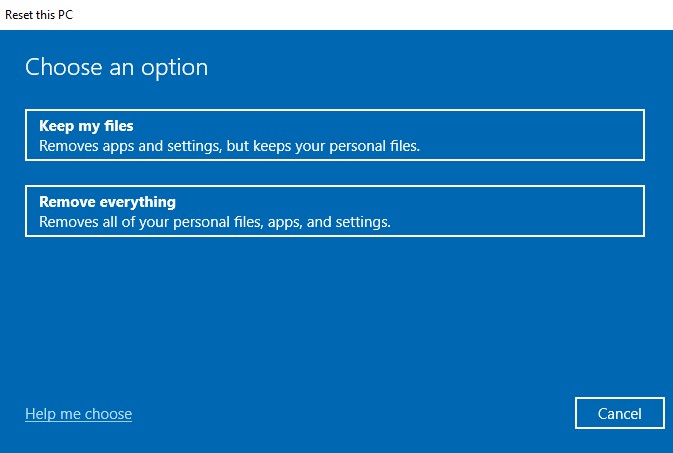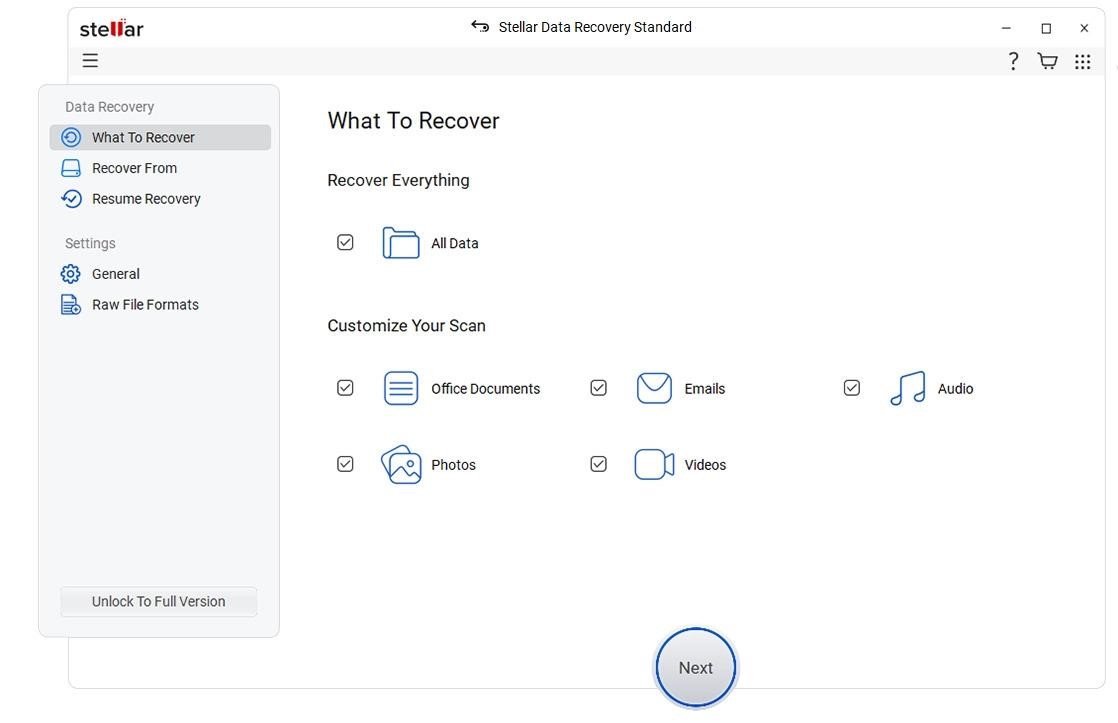While working on your Windows PC or laptop you might have faced an error, where the system suddenly freezes due to an OS issue, hardware related problem, or runs into a BSoD error. In such scenarios you’ll be unable to access your files or give command to your Windows computer. A quick resolution to this is a Factory Reset, but that leaves anyone with two options:
1. Keep my files
2. Remove Everything
Assuming you aren’t an expert, you start to scratch your head. Your patience wears thin, so you just go ahead and hit the Remove Everything option. And bam! The issue is apparently resolved and your PC reboots normally.
But in doing so you also paid a heavy price. You just said goodbye to all the previously stored data on your computer. Here’s what happened.
Undoubtedly resetting your Windows computer resolves the error causing the system freeze, but be aware about the fact that it also deletes your personal data in the process.
Is it Possible to Recover Files After Factory Reset?
Yes! but don’t rush. It is possible to recover files after a factory reset in certain favorable circumstances. Although it’s not always guaranteed because there are multiple factors involved. To make sense of all this, you need to understand the two ways to factory reset Windows:
1. Reset Using Windows Settings
A factory reset will restore your PC to its original state, like the one you saw on the first day of purchase. All your personal files, installed software, along with custom settings will be gone. When you go for a factory reset, Windows gives you two options to choose from:
Keep my files (Quick reset)
- Remove apps, drivers, and settings, but keep your personal files.
- Great for fixing software-related issues while keeping your data intact
Remove everything (Hard Reset)
- Removes all of your personal files, apps, and settings.
- Reinstalls a clean version of Windows.
- Great for dealing with malware, system crashes, and certain BSoD errors.

2. Reset Using Windows Installation Media
Resetting using a Windows installation media completely wipes the system drive and installs the latest Windows version from Microsoft’s server. It removes all apps, drivers, including OEM software and gives you a truly fresh start, where you can even delete or recreate partitions.
Now that you have understood the different types of factory reset, know that the odds of a successful recovery depend on two key factors:
- The type of storage drive: It is easier to recover data from HDDs, until they are overwritten. SSDs however, have a feature called TRIM that automatically clears any data post deletion. This is relevant in case of a system drive. However, external SSDs that are connected through a hub may bypass TRIM, offering a slim chance of recovery.
- Drive usage after factory reset: Note that if you’re still using the drive after reset, it can overwrite recoverable data. It is recommended to stop using the drive immediately after factory reset to greatly improve your chances of recovery.
Recover Files After Factory Reset Windows
If you had backed up your data to cloud before factory resetting the PC, recovery will be a breeze. You can simply connect your backup disk, or access your cloud backup account to restore your files.
But for those of you who did not have the foresight to back up your data, it’s another story. A last resort would be to use a specialized Windows data recovery software. Let’s explore these methods in detail, but before that, there are some general precautions to follow.
Before Recovery: The Do’s and Don’ts
- Stop using the device immediately after a data loss event
- Do not install any new applications or updates
- Use a separate recovery drive
Method 1: Restore Files Using Cloud Backup
Microsoft OneDrive automatically syncs your computer files to the cloud. This means if your files were synced before the factory reset, you can still recover them.
OneDrive also has its own Recycle Bin that stores all your deleted files for a period of 30 days. This gives you a window for recovery even after file deletion, such as in case of a factory reset.
Recovering your files using Microsoft OneDrive is a 2 step process. First, you need to visit onedrive.live.com and then sign in using your Microsoft account credentials. Next you need to look for the Recycle Bin option on the left sidebar, click it and then select the files you want to retrieve, hit Restore and move them back to their original location.

Method 2: Restore Files Using Data Recovery Software
Even though backup tools are helpful when restoring data in certain situations, they each come with their own limitations. After a factory reset, you can use a DIY recovery tool, Stellar Data Recovery to retrieve data from your Windows PC. It helps support recovery from both internal and external storage mediums, including HDDs, SSDs, SD cards, etc. This software is especially helpful with recovering lost data after factory reset, logical corruption, accidental deletion, formatting, and other issues.

Wrapping Up
A factory reset is a great option when you’re dealing with a system issue or selling off your old computer, but it comes with a huge drawback, namely, the risk of losing your data – once and for all. But fortunately, not all is lost and there are still ways left to get your files back. Backups are real life savers in such scenarios, however, in case you don’t have one, we recommend using a dedicated Windows data recovery software to reclaim your lost files.